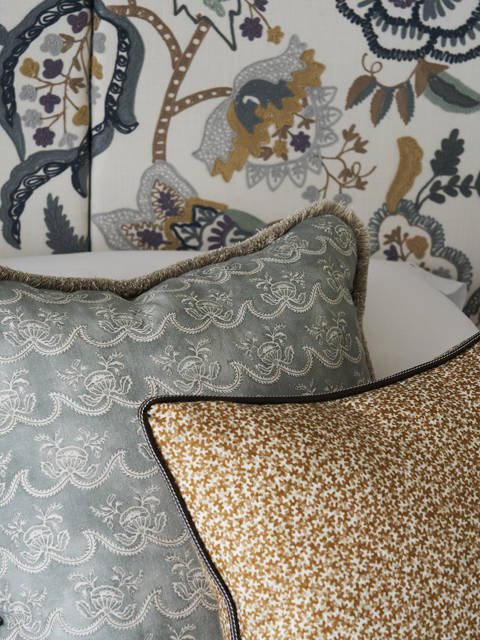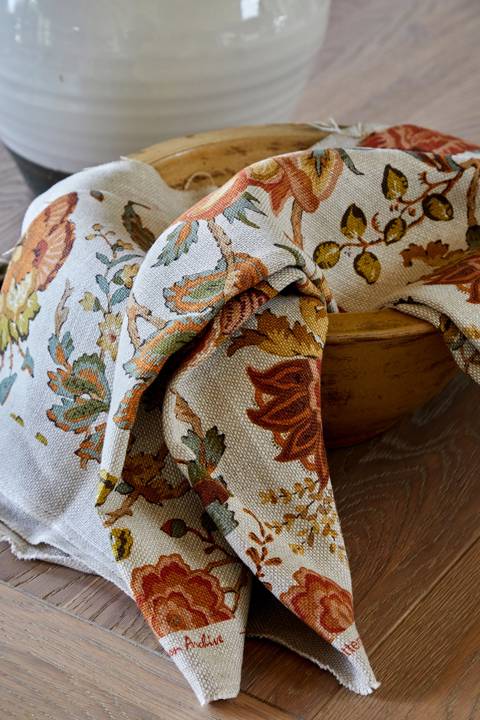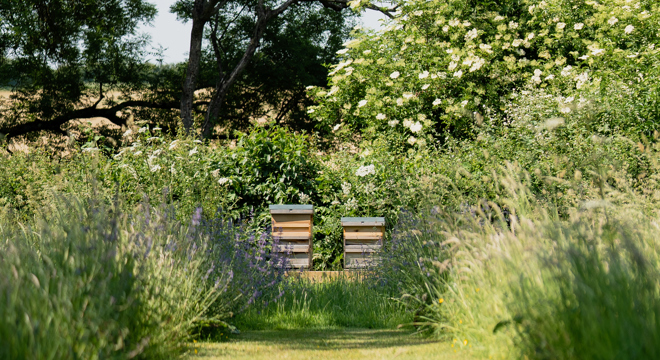Tackling Textile Waste with Haines Collection
42% of textiles in UK landfills come from soft furnishings. That staggering figure highlights a hidden crisis in the interior design industry—one that often escapes the scrutiny directed at fast fashion. 80% of environmental impact is determined at the design stage, making it clear that sustainability starts long before a room comes together.
While sustainability targets in interiors lag behind other industries, we believe that’s no excuse to stay passive. On our journey to becoming BCorp accredited, we’re learning from leaders like Jules Haines, founder of Haines Collection, whose mission is to reduce waste and reshape the future of interior design.
The Hidden Impact of Interior Design Waste
The fashion industry’s environmental toll is well-documented, but the interiors sector’s contribution to textile waste is just as significant. According to WRAP, nearly half of all textiles in UK landfills—from rugs and curtains to bedding—come from soft furnishings. Yet, while second-hand clothing is on the rise, only 4% of consumers are buying pre-loved home textiles.
This is where Jules Haines and her innovative platform, Haines Collection, come in. By rehoming surplus fabrics from over 100 textile houses and interior design studios—Sims Hilditch included—Jules is transforming waste into opportunity. Since 2020, over 37,000 metres of high-quality fabric have found new homes instead of ending up in landfills.
But the mission doesn’t stop there. Haines Collection also deals in leftover trims, wallpaper, cushions, and lampshades, giving new life to materials that might otherwise be discarded. Jules recently visited our studio to share insights on how we can further support sustainable initiatives within the industry.
What inspired the creation of Haines Collection?
"While working for a textile designer, I saw firsthand the massive volumes of waste in interiors. A chance encounter with a local upholsterer, who struggled to sell leftover fabrics, solidified the idea. Businesses were spending money to store surplus and barely breaking even when selling it off. That’s when I knew there was a better way—a platform that saves time, reduces costs, and prevents beautiful textiles from ending up in landfills."
What have you learned about integrating sustainability in interior design?
"It’s not always the easiest or most cost-effective route, but it has the biggest impact on future generations. Small decisions now can create lasting change. It’s been a slower process than I expected when I started five years ago, but we’re making progress."
What changes would you like to see in the industry?
"Legislation is key. I’d love to see mandatory reporting on how manufacturers manage textile waste. With over 900,000 tonnes of textile waste in UK landfills (42% from home textiles), brands should be held accountable if they aren’t designing out waste or creating circular products."
What’s next for Haines Collection?
"I’m looking for solutions for smaller textile waste, like used fabric samples and swatch books. It’s a huge issue in our industry, and currently, sorting and recycling them is very labour-intensive. But we may have found a partner to help, so stay tuned for Haines Recycled!"
The Future of Sustainable Interiors
Textiles aren’t the only challenge in the interiors industry. 22 million pieces of furniture are discarded in the UK each year, most ending up in landfills. A shift is required across the industry to collaborate with sustainable initiatives like Haines Collection, move towards more circular design, and hold ourselves and partners accountable at every stage of the design process.
As the push for legislation like Extended Producer Responsibility (EPR) gains traction, the interior design industry must prepare for change. EPR would hold producers accountable for their products throughout their lifecycle—from creation to disposal—making sustainable design practices not just beneficial but essential.
At Sims Hilditch, we focus on creating timeless designs and incorporating antiques and responsibly sourced pieces into our schemes. By designing for longevity and reuse, we can significantly reduce the environmental footprint of our projects. We’re committed to being part of this shift. By learning from innovators like Haines Collection and embedding sustainability into every stage of our design process, we’re helping to create interiors that are as kind to the planet as they are beautiful.
The future of interiors is circular—and we’re excited to lead the way.






